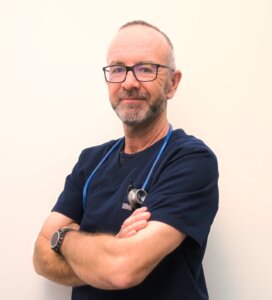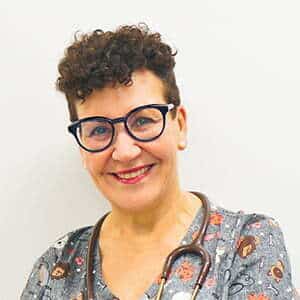Fracture Clinic Brisbane
Comprehensive Fracture Care in the Heart of Brisbane
On site Radiology
X-ray & CT scan on Site
Radiology open till 8pm daily
Closed reduction
We perform closed reduction on displaced fractures & dislocated Joints.
Fibre Glass Cast
We perform high quality Fibre glass cast which is light weight and waterproof.
Moon Boot & Crutches
At urgent Care we stock Moon boot , crutches and fracture splints of all sizes
OPEN 7 DAYS A WEEK | 10AM - 9PM
Walk-in & be seen by a doctor without a booking
Meet our Experts Team @ Fracture Clinic Brisbane

Dr Shaun kennedy

Dr Ghazal Ghodosi

Dr Vijay Akkineni

Dr Dushyant Singh

Janice Hay
Fracture Clinic Brisbane : Without the Wait!
We @ Fracture Clinic Brisbane Specialize in the management and treatment of all acute fractures, broken bones and limb injuries.
Patients are seen by an emergency doctor and assessed by immediate x-ray or CT scans as needed
Common types of Fractures we Treat
- Clavicle Fractures
- Arm Fractures
- Wrist Fractures
- Hip Fractures
- Ankle Fractures
- Foot and Toe Fractures
- Hand and Finger Fractures
- Leg Fractures
- Elbow Fracture
- Finger Fracture
Fracture Treatment @ Fracture Clinic Brisbane
At Fracture Clinic Brisbane, we manage all acute fractures, broken bones and limb injuries. Patients are seen by an emergency doctor and assessed by immediate x-ray or CT scans as needed.
Our doctors perform closed reductions of displaced fractures before putting in a back slab/ cast. We also supply the equipment needed for fracture management.
- Crutches
- Moon boots
- Toe fracture boots
- Wrist brace
- Knee immobilizers
- Fibreglass cast for lightweight
Doctors at Urgent Care Brisbane offer closed reduction after we discuss your case with orthopaedic surgeons and arrange a followup with them.
During your assessment at Fracture Clinic Brisbane – The clinician may ask what medications you take and when you last ate or drank anything. The doctor will also ask if you’re allergic to analgesia. If possible, arrange for someone to take you home afterwards.
Your clinician may use local anaesthesia to numb the hurt area combined with a sedative to relax you while they reset your bone.
After analgesia, your bones get moved back into their proper positions. Once moved, the healthcare provider will use an X-ray to ensure the bone was correctly set.
You’ll receive a cast, so the bones don’t move during the healing process. The doctors of Fracture Clinic Brisbane can also recommend you to another fracture clinic for follow-up care.
After the closed reduction, you’ll need to stay at the clinic for an hour or more so the clinician can ensure you’re ok.
Fracture Clinic Brisbane offers – closed reduction procedure.
Closed reductions involves putting displaced bones together.
Damage to nerves, blood vessels, and other surrounding soft tissues is a risk when getting a closed reduction.
Blood clots can occur inside the injured limb and can be fatal. Your bone may look different after the procedure.
While it’s true some bones need six to eight weeks to heal, thicker ones – like the tibia – may need 20 weeks to recover from a break. Age, health, and bone health contribute to overall healing time.
People with diabetes may take longer to heal from broken bones. Meanwhile, a healthy child’s bones heal faster than a healthy adult’s.
Your bones go through three stages of healing:
- Inflammatory phase
- Reparatory phase
- Remodelling phase
Inflammatory phase
The inflammatory phase happens after about two days. Forty-eight hours into the fracture, the surrounding torn blood vessels release blood which begins to clot.
The clotting blood (called a fracture hematoma) interrupts normal blood flow around the break. The lack of blood will cause some blood cells to die. The inflammatory phase lasts about a week after the fracture.
Reparatory Phase
The reparatory phase happens alongside the inflammatory phase. About one to two days into the fracture, cartilage and tissue grow in and around the break for stabilisation.
Soft tissue called callus grows at both ends of the fracture until they meet, further stabilising the bone. Spongy bone called trabecular eventually replaces the callus tissue. The reparatory phase takes up to three weeks.
Remodelling Phase
In the final remodelling phase, the sponge-like trabecular bone becomes solid bone tissue. You may see swelling outside the bone, which gradually recedes.
Different Types of Fractures We Treat @ Fracture Clinic Brisbane

A transverse fracture happens when an impact breaks your bone perpendicularly. Suppose a car accident occurred, and you suffered a fractured arm; the bone in your arm will completely break straight across.
Transverse fractures occur in your legs, arms, and shin. Transverse fractures may be displaced or nondisplaced.
A displaced fracture will need an open reduction internal fixation (ORIF) to put the bones back in place. ORIF surgery is an invasive procedure that requires manually aligning broken bones.
After the doctor completes the procedure, they’ll keep the bone still with a cast or splint. The difference between a cast and a splint is that the latter offers less support but is easier to use and adjustable.
You can think of oblique fractures as the less clean version of a transverse fracture. An oblique fracture causes a complete break across the bone, but unlike transverse fractures, these injuries happen at an angle.
Oblique fractures cause bulging underneath the skin because of the bone jutting out of place. These fractures are common on long bones like the femur (or thigh bone).
How a doctor treats an oblique fracture depends on the injury’s severity. Minor fractures may only require a cast. A significant break may require surgical intervention.
Comminuted fractures are when an event leaves bones in fragments. A car wreck is the kind of severe trauma that may cause a comminuted fracture.
Hands and feet are the likeliest places a person would experience a comminuted fracture.
Fragmented bones will require surgery to stabilise the bone and keep the fragments from damaging the surrounding nerves, ligaments, organs, and veins.
A compound fracture is an open fracture where the bone pieces through the skin. Compound fractures are severe because of the seriousness of the injury and the high risk of infection.
You should get to your nearest hospital immediately after suffering a compound fracture.
Someone with this injury will likely need surgery to remove possible bone fragments, clean the open wound, and stabilise the bone. The patient will require antibiotics and a tetanus shot to combat bacterial infection.
A hairline fracture is a result of repetitive movement. Hairline fractures (or stress fractures) happen when people (usually athletes) intensify physical activities like gymnastics, dancing, running, or jogging.
You may have a hairline fracture if you experience these symptoms while participating in your chosen sport:
- Tenderness
- Swelling
- Bruising
These symptoms will diminish while you’re resting. The best way to treat a hairline fracture is resting.
A doctor may recommend a specific timeframe for how much time away from your sport you need. Icing the injury for about 20 minutes a day and elevating the break may help.
An avulsion fracture is when your bone breaks where it attaches to a tendon or ligament. The break causes the tendon or ligament to tear away from the bone.
Typically avulsion fractures don’t require surgery unless the bone fragment ends up too far from the bone. Medical providers will likely prescribe resting and ice for the injury. Motion exercises also help heal avulsion fractures.
Greenstick fractures are when part of a bone partially breaks. The bone may also bend near where the break occurs.
A doctor may manually bend the bone straight. Stabilising a greenstick fracture may only require a removable splint.
Spiral fracturing is the result of a limb being forcefully twisted or wrenched. The twisting causes a clean break where the bone snaps into two pieces. These “twist fractures” make the broken ends of the bone jagged.
The jagged break will need surgery to realign the bone pieces. The doctor then sets the bone with rods, pins, or screws.
After surgery, a doctor will cast the limb, and the patient will undergo physical therapy to regain their range of motion.
Pathological fractures aren’t caused by physical injuries but by illnesses that weaken the bones. Earlier, we mentioned osteoporosis and ontogenesis imperfect as two diseases responsible for bone degradation and fracturing.
The prescribed treatment depends on the condition the patient is suffering. Treatment for ontogenesis includes physiotherapy and surgery.
Fracture assessment
Fracture Clinic Brisbane prioritises accurate diagnosis for effective treatment. This begins with a thorough examination of the affected area. The clinic employs various techniques, including:
This is the first step to understanding the extent of the injury. It involves checking the area for swelling, deformity, and movement limitations.
This includes X-rays and CT scans, which are performed on-site for immediate and precise analysis. These imaging techniques help visualise the fracture and guide the treatment plan.
Fracture Treatment and Management
At the Fracture Clinic Brisbane, your journey to recovery is our primary concern. Our treatment methodologies include:
A non-invasive procedure that realigns fractured bones without requiring an incision, often serving as the initial course of action.
To manage the swelling that can occur after closed reduction, a semi-rigid fibreglass cast is applied to provide support and limit movement. This approach is reviewed after ten days.
This involves another X-ray to monitor the progress of the fracture. If deemed appropriate, a full cast is applied at this stage.
We specialize in waterproof casts that allow patients to shower without any difficulties. These casts offer the same level of support and protection as conventional casts, but with added convenience and comfort.
We work closely with hand occupational therapists, hand surgeons, and lower limb surgeons. This multi-disciplinary approach ensures that every patient’s treatment plan is well-rounded and thorough, addressing all aspects of fracture care.
Fracture Clinic Brisbane - Top Rated Clinic
Fracture Clinic Brisbane FAQs
Fracture Clinic Brisbane - Features & Services
No Wait Time
No more waiting for hours in the hospital emergency for non-life-threatening conditions. Just walk in and be seen by our team immediately!
Emergency Doctors
Our Doctors have years of experience working in different Emergency Departments across Australia and are highly specialized in Emergency Treatment.
Open 7 Days - 10AM - 9 PM
Our clinic is open seven days a week, from 10 am to 8 pm, so our community can receive the best after-hours GP and medical care.
In House Pathology
We have an in-house point of care lab and urgent processing of blood tests provided by Sullivan Nicolaides Pathology.
Hospital Admission
In accordance with our medical team's assessment, we will arrange hospital admissions for you in public and private hospitals.
On Site Medical Imaging
On-site X-ray, CT scan and ultrasound available from 10am to 8pm, 7 days a week. After hour charges apply.
Fracture Clinic Brisbane - Fees
Our aim is to make urgent health care affordable and available for all. So, at a very nominal fee, you can now avoid the wait at emergency departments.
Your Urgent Care visit costs consist of two components:
- Consultation Fees: Starting From $80. Click here for detailed pricing.
- Cost of any consumables: Camboots, Crutches, Splints, IV Therapy, Burn Dressing etc.
- After-hours pathology and public holiday surcharges may apply.
NO PRIVATE HEALTH INSURANCE IS NEEDED
- Fracture Clinic Brisbane
- After Hours Doctors Brisbane
- Emergency Doctors Brisbane
- Emergency Doctors Near Me
- Emergency Doctors Appointment
- Emergency Department Doctors
- Emergency Doctor Teleconsultation
- Emergency Doctor On Call
